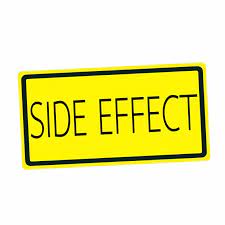Bonefos
- Introduction
- Uses of Bonefos
- How It Works
- Off-Label Use
- Side Effects
- Common Side Effects
- Dosage and Administration
- Composition
- Storage
- Interaction
- Warning
- Contraindication
- Careful Administration
- Important Precautions
- Administration to the Elderly
- Administration to Pregnant Women and Nursing Mothers
- Administration to Children
- Overdosage
- Handling Precautions
Introduction
What is Bonefos? Bonefos is a medication that is commonly used in the field of oncology to treat bone metastases, which are a common complication of various types of cancer. It stands out among pharmaceuticals due to its unique mode of action and the benefits it provides. Historical. Approval: Bonefos originated from research conducted in the late 20th century. It underwent clinical trials demonstrating its effectiveness in preventing bone resorption. The support of Bonefos by health regulatory bodies marked a significant milestone in cancer treatment, solidifying its crucial role in the medical community.
Uses of Bonefos
Bonefos (clodronate) is a medication that belongs to a family of drugs known as bisphosphonates. It is used to treat hypercalcemia (high blood calcium) in cancer patients. Clodronate is also used to treat cancer that has spread to bones (bone metastases) due to different types of tumors. It is highly effective in relieving bone pain in patients with cancer and significantly reduces the occurrence of related events. In addition, it can improve bone density in non-cancerous conditions 1. Bonefos is primarily used to manage bone metastases from breast cancer and prostate malignancies. It can also be used to treat osteolytic bone lesions and hypercalcemia caused by cancer 1.
Here are the references for the information provided:
1: Bonefos - Uses, Side Effects, Interactions - MedBroadcast.com
How It Works
Bonefos works mainly due to its bisphosphonate heritage, which allows it to bind to hydroxyapatite, a mineral found in bones. This binding process hinders the movement of osteoclasts, thereby reducing bone resorption. When we delve into the pharmacodynamics of Bonefos, we discover that it sets off a series of events that ultimately lead to osteoclast apoptosis. This mechanism is responsible for the acclaimed effects of Bonefos in osteolytic and osteoblastic lesions.
Off-Label Use
Off-label use refers to the practice of using a drug for purposes that were not originally approved by authorities. This often happens when healthcare professionals observe outcomes or smaller studies suggest potential benefits in new therapeutic areas 1. Although Bonefos was specifically designed for bone metastases, some doctors have also explored its use in osteoporosis due to its mode of action. Initial feedback indicates advantages, but further large-scale studies are needed to confirm these findings 1. Several reputable publications have discussed the potential of Bonefos in treating malignant bone disorders. While these studies are still in their stages, they provide intriguing scientific insights that warrant further investigation in the future 1.
Here is the reference for the information provided:
1: Bonefos - Uses, Side Effects, Interactions - MedBroadcast.com
Side Effects
Like any treatment, Bonefos comes with potential risks that should be considered. It's essential to be aware that consuming Bonefos can result in various reactions, some of which may be harmless while others could have significant impacts. The occurrence and intensity of these effects can be influenced by factors such as the patient's overall health condition, other medications they may be taking simultaneously, and any genetic predispositions they might have.

Common Side Effects
The commonly seen side effects are gastrointestinal issues, particularly nausea. It is not uncommon to experience fever after the initial doses. Paradoxically, there may be bone pain as well. To ensure a therapeutic experience and reduce the unwanted effects of Bonefos, patient-focused strategies such as adjusting the dosage and using additional therapies are often employed. These strategies aim to optimize the treatment while minimizing any accompanying discomfort.
Dosage and Administration
Recommended Dosage Levels: The recommended dosage levels for Bonefos may vary depending on the indication. Typically, a standard starting dose is prescribed in milligrams per day. However, individual responses to the medication can influence adjustments in dosage. Factors Influencing Dose Adjustment: Certain factors play a role in determining whether a dosage adjustment is necessary. These factors include function indices, the severity of the underlying bone pathology, and an individual's tolerance and previous side effect profile. Safe Administration Procedures: To ensure the administration of Bonefos and maximize its effectiveness while minimizing unwanted reactions, it is essential to follow specific procedures. These include taking the medication on a stomach, maintaining an upright posture after consumption, and staying adequately hydrated.
Composition
Bonefos contains acid as its main active ingredient and other substances called excipients that help improve its stability, taste, and effectiveness. Clodronic acid plays a role in the therapeutic aspect of the drug, while the excipients ensure that it smoothly travels through the body and reaches the bone tissues for optimal delivery.
Storage
To ensure that Bonefos remains effective, it is essential to store it in conditions. This means protecting it from excessive light and extreme temperatures. Doing so can prevent the drug from degrading and maintain its potency. It is crucial to pay attention to the expiration date of Bonefos. Once this date has passed, the medicine may not lose its effectiveness. It could also potentially have harmful effects. Therefore it is essential to adhere to this threshold. When handling Bonefos, it is vital to ensure your hands are clean.
Additionally, you should keep the medication out of reach of children. If you have unused tablets, it is best to consult a pharmacist for proper disposal guidance. These practices exemplify the principles of responsible Bonefos management.
Interaction
Certain medications and substances such as calcium supplements, antacids, and certain diuretics can hinder the absorption of Bonefos. Reduce its effectiveness in treating conditions. Additionally, drugs that affect kidney function may require a reassessment of the dosage for Bonefos. It is generally recommended to schedule the intake of Bonefos and other interacting medications at different times while also regularly monitoring kidney function to ensure optimal effectiveness of the treatment.
Warning
While Bonefos is designed to provide benefits, it is essential to note that there are potential severe reactions or outcomes associated with its use. Although these instances are rare, clinicians must remain vigilant and attentive. One such painful outcome is osteonecrosis of the jaw, a rare condition characterized by significant loss of bone in the jaw. Patients with existing conditions may also experience renal impairments as a potentially severe reaction to Bonefos. Another possible adverse effect includes imbalances, particularly hypocalcemia. To ensure therapeutic outcomes, it is essential to recognize the signs of adverse reactions. Persistent jaw pain, significant changes in urine output, tingling sensations, or muscle spasms could indicate the onset of these outcomes mentioned earlier.
Contraindication
There are situations and conditions where it is not recommended to use Bonefos. These include patients with kidney problems, individuals with a known allergy to Bonefos or its ingredients, and those with low calcium levels in their bodies. In some cases, healthcare professionals may consider other options, like bisphosphonates, denosumab, or nonpharmacological interventions, as more suitable alternatives.
Careful Administration
When administering Bonefos, it is essential to take precautions. Stay hydrated and avoid consuming calcium foods or supplements around the administration time. Additionally, follow guidelines after taking the medication. Regular checkups are necessary when using Bonefos. It is essential to assess kidney function, have dental checkups, and evaluate calcium levels as part of the monitoring process.
Important Precautions
Important Considerations Before. During the Administration of Bonefos: 1. Before starting Bonefos, it is crucial to ensure that calcium and vitamin D levels are at their levels. 2. Avoid using medications that may potentially harm the kidneys simultaneously with Bonefos. 3. Maintaining oral hygiene is essential to minimize the risk of osteonecrosis. Educating Patients for Enhanced Awareness: Educating patients about side effects and dietary considerations and recognizing signs of adverse outcomes can significantly improve therapy adherence and safety.
Administration to the Elderly
When it comes to adults, we need to consider their unique physical characteristics. This is important because their body may process medications differently. It's crucial to be careful when giving them medication, considering their kidney function and overall bone health. Adjusting the dosage and regularly monitoring their kidney function and electrolyte balance is extremely important due to the decline, in renal function as people age.
Administration to Pregnant Women and Nursing Mothers
Considering the importance of the health of newborn babies, it is crucial to carefully evaluate Bonefos when used by pregnant and breastfeeding mothers. The available information indicates risks to the fetus, so its use should be limited to life-threatening situations. If Bonefos is deemed necessary, using the effective dose for the shortest possible duration is essential while closely monitoring the baby's well-being.

Administration to Children
Regarding children, we must consider that their skeletal system constantly changes. This means that Bonefos may affect them differently compared to adults. We consider factors such as weight and overall bone health to determine the dosage. For children with less bone mass and faster turnover, it might be necessary to use lower doses. At this time, it becomes essential to calculate the dosage based on their weight to ensure the treatment is effective without causing any unnecessary side effects.
Overdosage
Identifying Signs of a Bonefos Dose Although uncommon, an accidental overdose may lead to noticeable symptoms such as severe calcium deficiency, kidney problems, and disruptions in the digestive system. Immediate Action and Available Treatment for Overdose: If an overdose occurs, it is crucial to seek medical attention. Treatment options include calcium infusions, proper hydration, and optimizing renal function.
Handling Precautions
Safety Guidelines for the Proper Handling and Disposal of Bonefos To maintain its effectiveness and ensure safety it is crucial to handle Bonefos with care. Here are some essential guidelines: 1. Always hold Bonefos with dry hands. 2. Store the medication in a dark place out of reach of children. 3. When disposing of unused medication, make sure to use designated pharmaceutical disposal channels. Preventing Contamination or Accidental Ingestion To prevent ingestion or contamination, it is essential to take the following measures; 1. Never leave Bonefos tablets unattended. 2. Store them away from household items. 3. Use child containers as an extra precautionary measure. By adhering to these guidelines you can ensure the handling and disposal of Bonefos while prioritizing safety.







